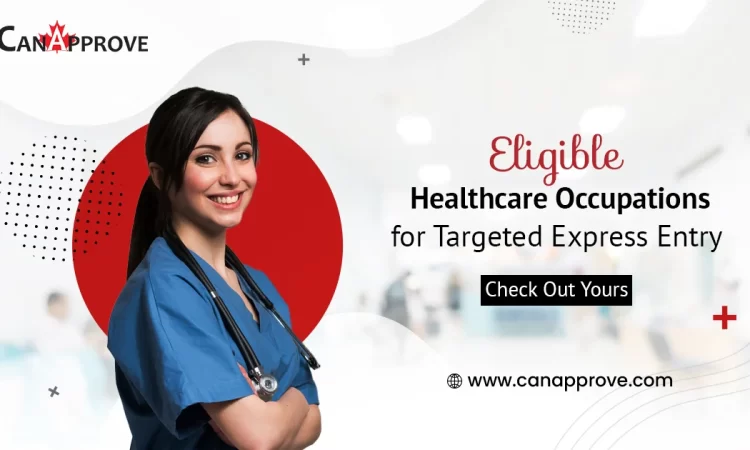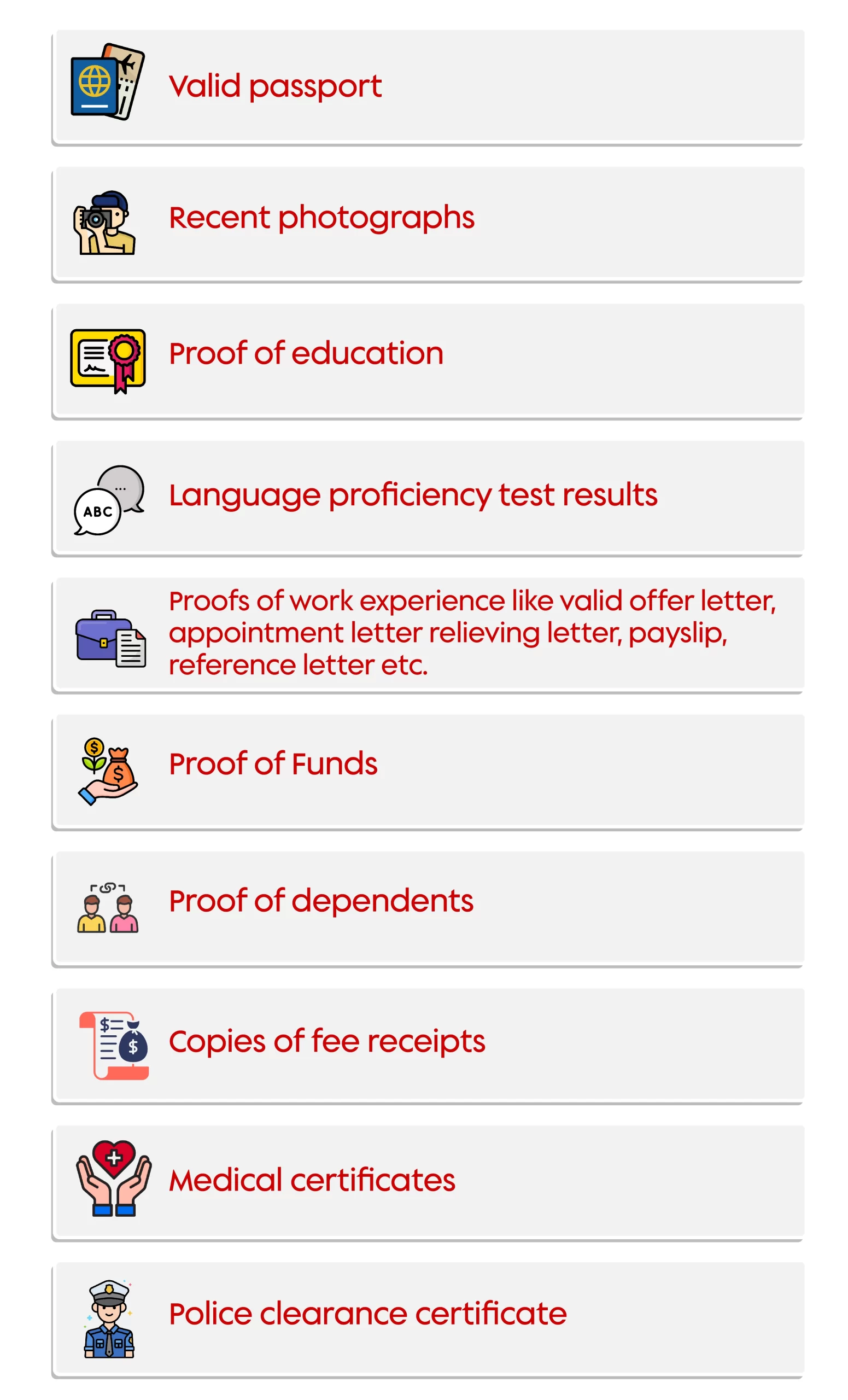A Canadian immigration program called Express Entry makes it easier to choose qualified workers for permanent residence in Canada. The evaluators use a point-based method to assess candidates, considering factors such as age, education, work history, language proficiency, and other attributes.
Nonetheless, there are a few frequent errors that candidates make in their Express Entry profiles. Such circumstances can result in delaying or rejecting their application. This post will go over the top 10 common mistakes to avoid when creating an Express Entry profile
The Top 10 Common Mistakes in an Express Entry Profile
?Low Educational Credential Assessment (ECA) Score
Candidates who received their education outside of Canada must complete the Educational Credential Assessment (ECA). The ECA assesses the candidate’s educational background and assigns a score based on the Canadian educational framework.
However, many applicants make the error of failing to complete the ECA or receiving a low score, which can lead to a reduction in points through the Express Entry method. To prevent delays, getting an ECA from a recognized organization is always advisable as soon as possible.
?Not Providing Proof of Funds
For candidates without a current work offer or Canadian educational credentials, you must submit proof of finances. Sufficient funds is a must to support the applicant and their family for the duration of their first stay in Canada.
Many candidates make the error of submitting phony documents or as insufficient proof of funding, which can lead to your application being rejected. Make sure to provide official documentation of your finances, such as bank statements, employment contracts, or titles to real estate.
?Not Submitting Valid Personal Information
Names, dates of birth, and passport numbers are examples of personal information that needs to be precise and match data from other documents. Many applicants submit false personal information. Submitting an application with incorrect or misleading details regarding your criminal history, health issues, or professional background can result in the rejection or delay of the application. To stay out of situations like these,
it is best that you fill in the information with correct and relevant details. You can seek guidance from a certified immigration expert for more queries when submitting your documents.
?Not Providing Accurate Language Test
The Express Entry program places a high value on language skills. Submission of language test results from an accredited testing organization is mandatory. To boost their scores, a lot of applicants, however, submit false or invalid language test results.
A ban from the Express Entry program and other immigration programs may follow this. Check to ensure the results of your language exam satisfy the necessary CLB score and are valid for at least two years.
?Not Meeting the National Occupational Classification (NOC) Requirements
The National Occupational Classification (NOC) gives each occupation a code. A system that is based on the job duties and level of skill. Verifying that the applicant’s employment responsibilities and obligations align with the NOC requirements is essential.
Many candidates choose the incorrect NOC code or fail to complete the NOC standards, which might result in their application is being rejected. Select an NOC code that has a verified one-year history within the last 10 years. There is no impact on future Canadian work chances for your primary NOC code.
?Not Fulfilling the Requirements for Express Entry Draw
Candidates who meet the minimal Comprehensive Ranking System (CRS) score are chosen for permanent residency through periodic Express Entry draws. Many candidates commit the error of neglecting to submit their profiles on time or failing to attain the CRS score threshold. Which could deprive them of the opportunity to be considered for permanent residency.
To be eligible for the Express Entry draw, you must make sure your profile satisfies the minimum CRS score criterion and submit it on time. One way to help satisfy the criteria is to research the minimal CRS score needed and prepare the profile accordingly.
?Not Acquiring the Necessary Number of Work Experience
Gaining the necessary amount of work experience in the chosen NOC code is essential for the Express Entry program. Because it is a critical component. Many applicants make the mistake of choosing the incorrect NOC code or not gaining enough work experience, which can lead to lower scores and application rejection.
Getting the necessary quantity of work experience in the chosen NOC code is essential. One way to fulfill the work experience criteria is to look into the requirements and get the required paperwork.
?Not Checking the Application Before Submitting it
Before submission, ensure that you have included all required information. And that there are no mistakes or inconsistencies by carefully reading the application. Although common blunder made by applicants is to not proofread their application before submitting it, which can lead to inconsistencies or mistakes in their profile.
Before you submit your application, You must thoroughly review your application to make sure you have included all the required information and that there are no mistakes or inconsistencies. Verifying the application again before submitting could help prevent errors.
?Insufficient Letters of Reference for Employment
If you submit reference letters without providing details about your job title, employment history, salary, weekly hours worked, or specific tasks, your application may be denied or delayed. You must provide reference letters with comprehensive information as proof. You can also add your paychecks or certified documents to support any missing information.
?Not Seeking Expert Guidance
Many candidates make the error of not consulting immigration experts or attorneys, which might result in inaccuracies or inconsistent information in their application. In addition to ensuring that their profile is correct and current, candidates who seek expert advice can better comprehend the intricate immigration rules and regulations.
Seeking professional guidance from immigration consultants or lawyers can help you understand the many immigration rules and regulations. It is possible to prevent errors in the application by doing your homework. And by choosing a reliable immigration adviser or attorney. By adhering to these guidelines, candidates can avoid common errors in their Express Entry profile, thereby enhancing their chances of being selected for permanent residency in Canada.
Wrap-Up
When applying for a visa, you could become confused! Accordingly, if you have the right help, this may be a piece of cake. CanApprove is here to help for this reason! Our team of the top immigration and overseas education experts in Canada guarantees a perfect application and documentation procedure.
From the time you submit your application until you reach your destination, we will help you every step of the way. Speak with our consultants at CanApprove for additional information regarding the visa application process; we would be happy to help!
FAQs
1. Why Express Entry is rejected?
Applications may be denied for several reasons. Such as not meeting eligibility requirements, submitting inaccurate or incomplete information, lacking necessary documentation, or failing to submit by the deadline.
2. What is the minimum CRS score to create an Express Entry profile?
To create an Express Entry profile with Immigration, Refugees and Citizenship Canada (IRCC), a person must score 67 points in the Express Entry system of Canada.
3. How is Express Entry selected?
The Comprehensive Ranking System will be used to rank you in the Express Entry pool if you are eligible for any or all of the programs and submit your profile (CRS). Finally you must score higher than the required number of points for your round of invitations to be invited.




 The demand for RNs and NPs in Canada is consistently high due to various factors such as an aging population, an increase in chronic health conditions, and a growing need for healthcare services in rural and underserved areas.
The demand for RNs and NPs in Canada is consistently high due to various factors such as an aging population, an increase in chronic health conditions, and a growing need for healthcare services in rural and underserved areas. The demand for medical practitioners, including physicians and specialists, varies across different provinces in Canada due to factors such as population size, demographic trends, healthcare needs, and regional disparities in access to medical services.
The demand for medical practitioners, including physicians and specialists, varies across different provinces in Canada due to factors such as population size, demographic trends, healthcare needs, and regional disparities in access to medical services. For international pharmacists seeking to practice in Canada, the credential assessment and licensing process involves several steps:
For international pharmacists seeking to practice in Canada, the credential assessment and licensing process involves several steps: The Express Entry process involves several steps:
The Express Entry process involves several steps: 


